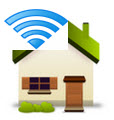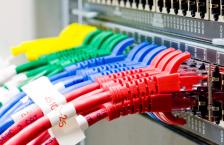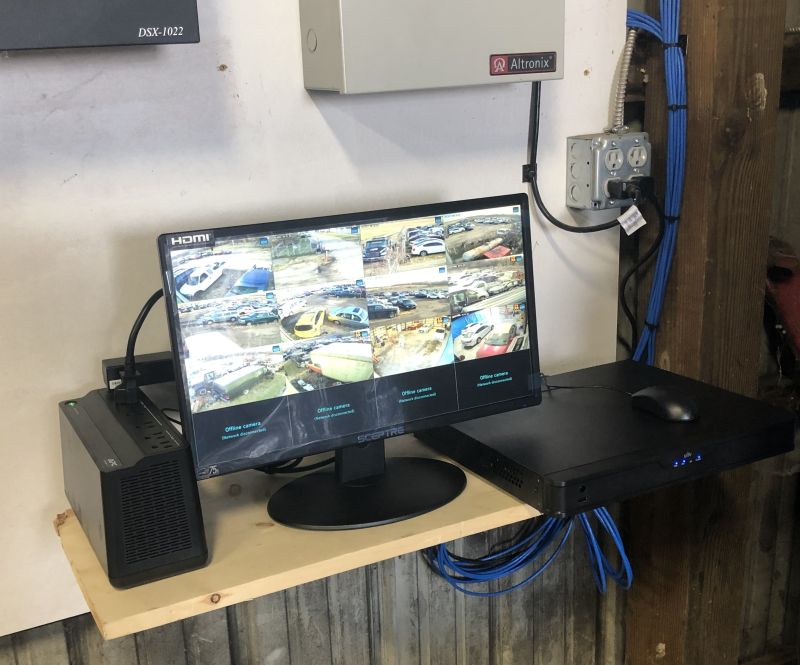Connecting devices to networks – that is the primary purpose of an Ethernet device, just like your internet connection. Similar to how many internet connections vary in their speed and bandwidth, no Ethernet cable is the same either. If you have ever found yourself in a predicament where you just do not know which cable is best for you, then you are not alone. Modern networking standards have made Ethernet designations even difficult, in that they are too difficult to understand.
If we ask you this question: “How would you install an outdoor CAT6 cable properly?” Safe to say that you probably will not know the answer to this. Keep on reading to find out which cable is right for which situation.
How to choose an Ethernet Cable?
In this section, you are going to find out everything you need to know about the different Ethernet cables.
The most obvious way to select the cable which is right for you is to pick the one that has the most range. But there is more to the story than that. You need to consider the speed at which your network performs. This is not a requirement for home networks. However, if you move larger files through your network, or stream HD video content, a regular Ethernet cable will not do you much good. In that case, a better Ethernet cable, preferably an optical fiber connection can make a huge difference.
You also need to consider the router as well. Cheaper routers support Ethernet up to 100 MB per second, so it will not work for anything newer than Cat 5 cables. If you have such routers, then selecting a Cat 6 cable will not do you much good.
Now let us look at some specifications.
What does ‘Cat’ Mean?
Let us say that you have been browsing online for Ethernet cables for a while now. You might have noticed that almost every cable has a classified cable name like “RG 58 cable” or an “outdoor CAT 5e” cable. To put it simply, “Cat” means “Category” and “RG” stands for Radio Guide. These are many others but our focus here is on the “Cat” cables. The number that follows the “Cat” indicates the manufactured specifications of the cable. A rule of thumb is that the higher the number, the faster is the speed and frequencies, in MHz.
Similar to new technologies, newer Ethernet cables have the tendency to support higher bandwidth, and as a result, increase download speeds and better connections.
Remember that longer Ethernet cables will result in slower speeds of transmission, even though cables bought for home use rarely exceed the length of 100 m, which means they are not likely to experience a drop-off in speed.
Cat 5 Cable
Category 5 cable, aka Cat 5, is a twisted cable built for computer networks. Since 2001, the most popular type of Cat 5 cable is the Cat 5e cable. It is a standard cable that provides performance for up to 100 MHz. Its other uses include carrying signals for telephones and video.
Applications
The primary use of Cat 5 cables lies in structured cabling for computer networks like Ethernet over twisted pair. This particular cable standard provides performance ranging up to a 100 MHz and works for both High-Speed Ethernet (two wire pair) and Gigabit Ethernet(four wire pairs). This means that you can use it for internet applications and other household network functions too.
Cat 5e
The “e” in the Cat 5e cable stands for enhanced. Overall, there are no physical differences that differentiate a Cat 5 from a Cat 5e, but the 5e Ethernet is developed and tested under stricter standards so as to eliminate crosstalk, which is basically a fancy word for interference between signals. Currently, this cable is the most common type for Ethernet usage, particularly due to its low production costs and faster speeds compared to the Cat 5.
When it comes to choosing a network cable for companies, IT managers and business owners have usually preferred the use of Cat 5 cables. So the choice of cables has been pretty standard over the years.
At this point, you might argue that there are many other options for cables, some being better than Cat 5. While that is true, there is no guarantee that it fits the need for your particular network.
Advantage: Cost
There is a clear advantage of using Cat 5 cables when you bring cost into the equation. It has and remains one of the cheapest options for networking cables. Due to its affordability, it is also used in cross-over cable jobs as well.
Advantage: Transfer Speeds
Cat 5 provides a substantially higher transfer speed for Ethernet connections. In comparison to older and obsolete cabling, it can reach higher rates. Other capabilities include having the ability to transfer four signals at once.
Advantage: Versatility
Perhaps the shining star for Cat 5 is its versatility. Two forms of cable are used. One form is called a solid conductor, which is stiff and is used to join together wall sockets with the central panel in your home or office. The solid conductor is the cheapest form of Cat 5 available in the market. The other one, which is the standard conductor form, is used to connect computers to the wall socket. This wiring is a lot more flexible. The versatility of this cable makes it an ideal choice for multiple applications in cabling/wiring computer networks and telephones with several better wires on the market.
Disadvantage: Data Transfer
While the cable has several advantages, it also comes with its fair share of limitations as well. The main disadvantage of using a Cat 5 cable is the amount of data being sent to and from the cable. The cable is very limited on its top-end in terms of data transfer. While the cable is good for setting up a network at home, it can only handle up 100 Mbps. Therefore, trying to use the cable to set up networks for corporate offices and networks might not be that useful. The data streaming through the network would be just too much for the cable.
Disadvantage: Interference
Another disadvantage Cat 5 brings with it is the issue of sensitivity to interference. When faced with electrostatic disturbances from several handheld devices and other devices, the effectiveness of the cable is reduced. Objects that project inductive interference, such as phones, microwaves, television signals, computer signals, and other frequencies can cause a lot of interference with Cat 5 transfer. Additionally, it can also pick up interference from cables that it is joint together with. This is referred to as cross-talk. Cross-talk can result in serious problems with transferring data and signals. Moreover, cross-talk also reduces transfer speeds.
Cat 6 Cable
Commonly referred to as Cat 6, the Category 6 cable is another twisted pair cable used in Ethernet and network applications. It is backward complete, meaning it can be joint together with Cat 5/5e and Cat 3 cables as well.
Compared with Cat 5 and Cat 5e, these cables support higher bandwidths. However, they are also more expensive. They are expensive because of their QA standardization and are more tightly wound compared to their predecessors, and have an outfit of foil and braided shielding. The shielding protects the twisted wires inside the Ethernet cables, which helps to prevent crosstalk and noise interference from happening. These cables can technically support speeds going up to 10 Gbps, but only to a length of 55 meters.
Compared to the Cat 5 model, the Cat 6 features stricter specifications with regards to crosstalk and system noise. It specifies that performance of up to 250 MHz compared to 100 MHz for both Cat 5 and Cat 5e.
Cat 6a
The “a” in this design of cable stands for “augmented”. Compared with the regular Cat 6 cables, the Cat 6a model supports twice the maximum bandwidth, and they are also able to maintain higher transmission speeds over cable lengths that are longer. These cables are always shielded and so is their shielding, which makes them ideal when cross-talk occurs. They help to completely eliminate cross-talk, making the Cat 6 cable a lot denser, and less flexible than the Cat 6 model.
The Category 6 cable helps to set a standard for Gigabit Ethernet. The Category 6 Ethernet is backward compatible with the Cat 3 and Cat 5/5e cables. This helps to create a high-speed computer network for both homes (rarely) and for larger companies as well. However, it only provides that level of performance if other components within the network are compatible with gigabit speeds as well.
Advantage: Speed and Performance
One of the best things about this cable is the level of speed that it provides. The Cat 6 can handle speed performances for up to 250 MHz. This performance makes the device possible to be used with a faster Ethernet network, which includes Gigabit Ethernet connections and even 10 GB Ethernet too.
The introduction of this cable was done to complement Gigabit internet in particular which includes a wider range of interface cards, patch panels, routers, switches, and other components which make for a full gigabit network. Many IT professionals realize that the Cat 6 cable provides a speedy network performance which delivers gigabit speeds.
Advantage: Similar Structure with Cat 5 Cable
This advantage can be mixed with the versatility of Cat 6 cables as well. In terms of structure, both Cat 5 and the Cat 5e are the same. The Cat 6, Cat 5, and Cat 5e cables each have a combination of 8 wires twisted together to form four pairs. The only major difference is that one pair of Cat 6 cable is kept away from any contact with others so that it produces double the bandwidth of the Cat 5 and Cat 5e cable as well.
Advantage: Backward Compatible
The plug and port of the Cat 6 cable are the same as the Cat 5 and Cat 5e cable. This means that it can be plugged into any particular port or connection that provides support to both the cables. If, for example, you choose to use the Cat 5 port, it will not provide the full speed that is able to handle. It will operate at the same speed you would expect for a computer network cable. However, speed is still better.
Advantage: Upgradable
If you are looking to update your company’s network, then the Cat 6 cable is included as a part of the upgrade. The Cat 6 cable will not be operated at full speed if other units within the network do not support gigabit speeds. We will highly recommend small businesses that are looking to improve network performance to shift towards installing the Cat 6 cable since it is becoming the industry standard.
Disadvantage: Expensive
Compared with the costs of the Cat 5e cable, Cat 6 is a lot more expensive. If the cable is not showing substantial improvement in your network, it is best to not install it for your company. In most cases, the Cat 5e is a sensible choice since it is more economical while still providing good performance. The Cat 5e cable also comes in a variety of different colors.
Disadvantage: Does Not Guarantee Full Speed
It is an error of judgment to believe that buying a Cat 6 cable will offer them higher speeds of the gigabit network. In reality, the Cat 6 cables only yield the full speed if each of the components in the network is operating at the gigabit speeds. If even one of the components is not rated gigabit, then your network is going to operate at the speed of the slowest device.
The average users might sometimes be persuaded to purchase the Cat 6 cable without truly understanding the impact that it will have on their network. Therefore, a bit of research before making the decision is recommended.
Conclusion:
In this article, we went at length about Cat cables and their various categories. We also talked about their advantages and disadvantages in different use cases. Moreover, we also discussed their relevance in various practical cases, and which one is better in which case. We hope that this article provided you with enough insight into making the decision for yourself.






0